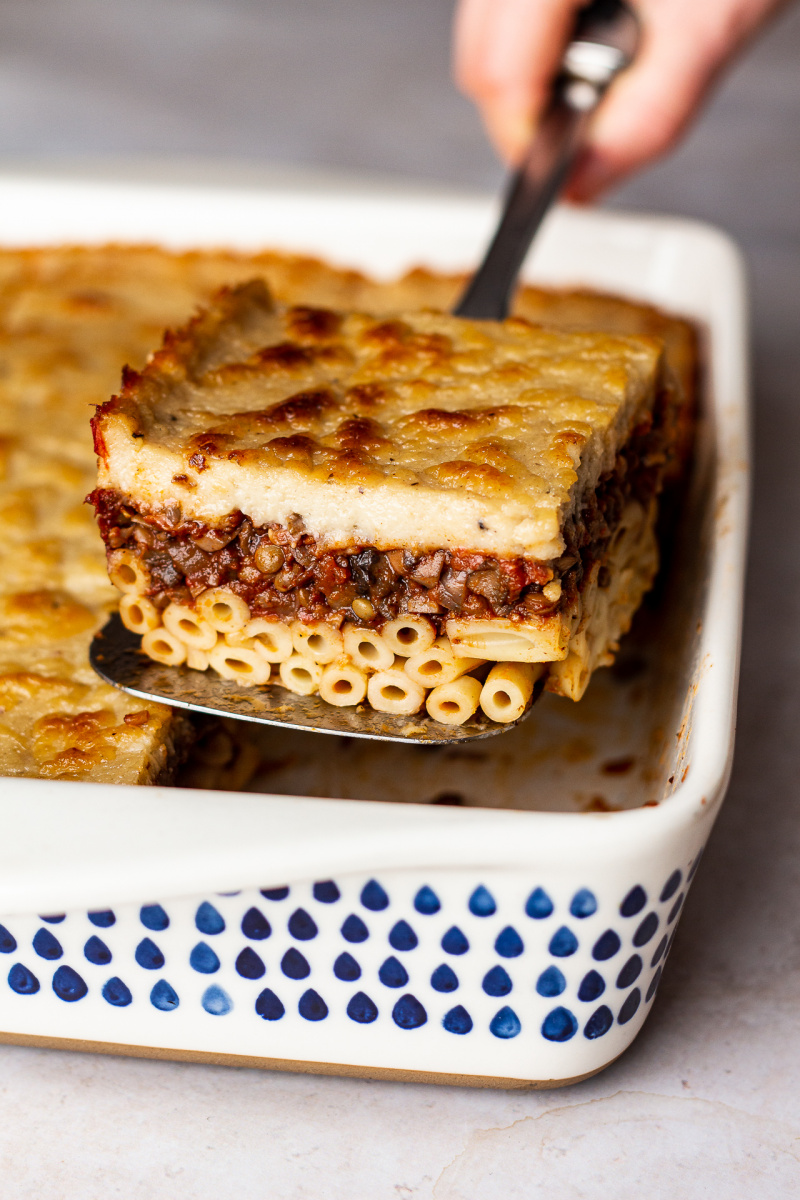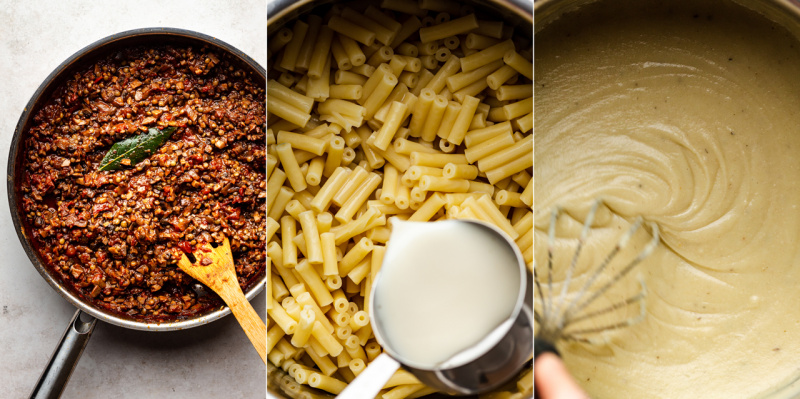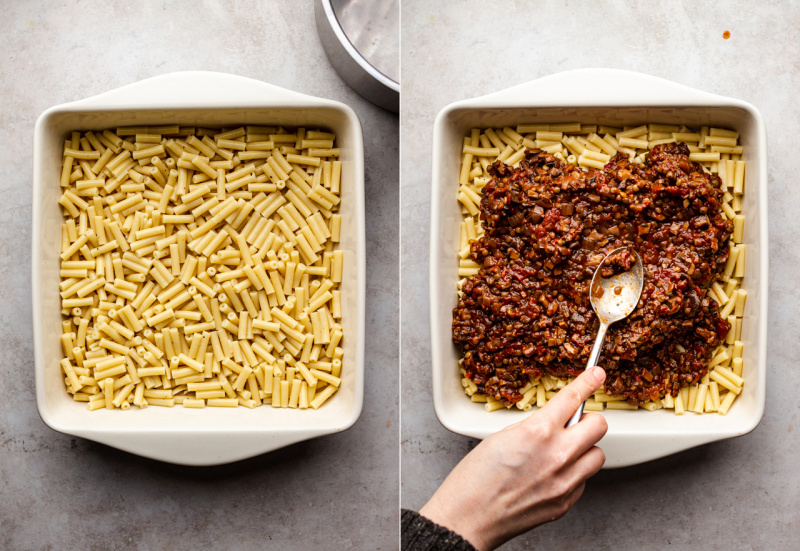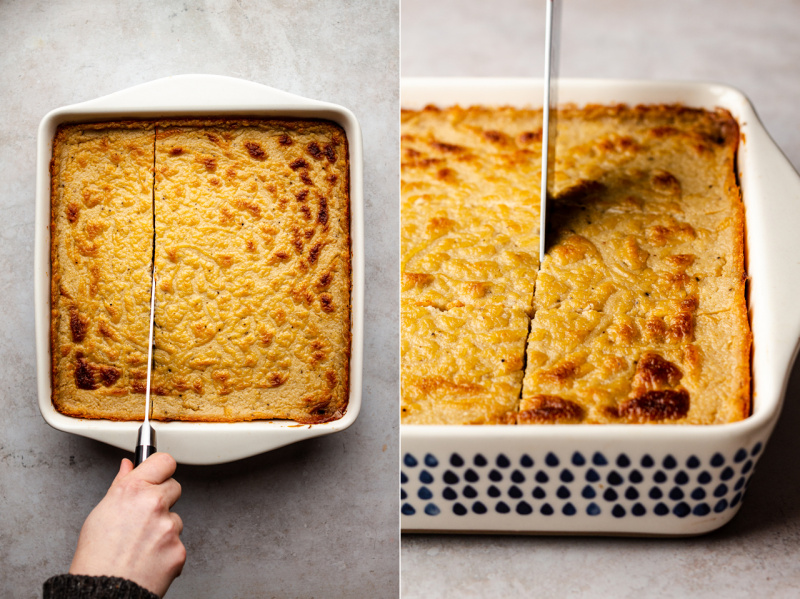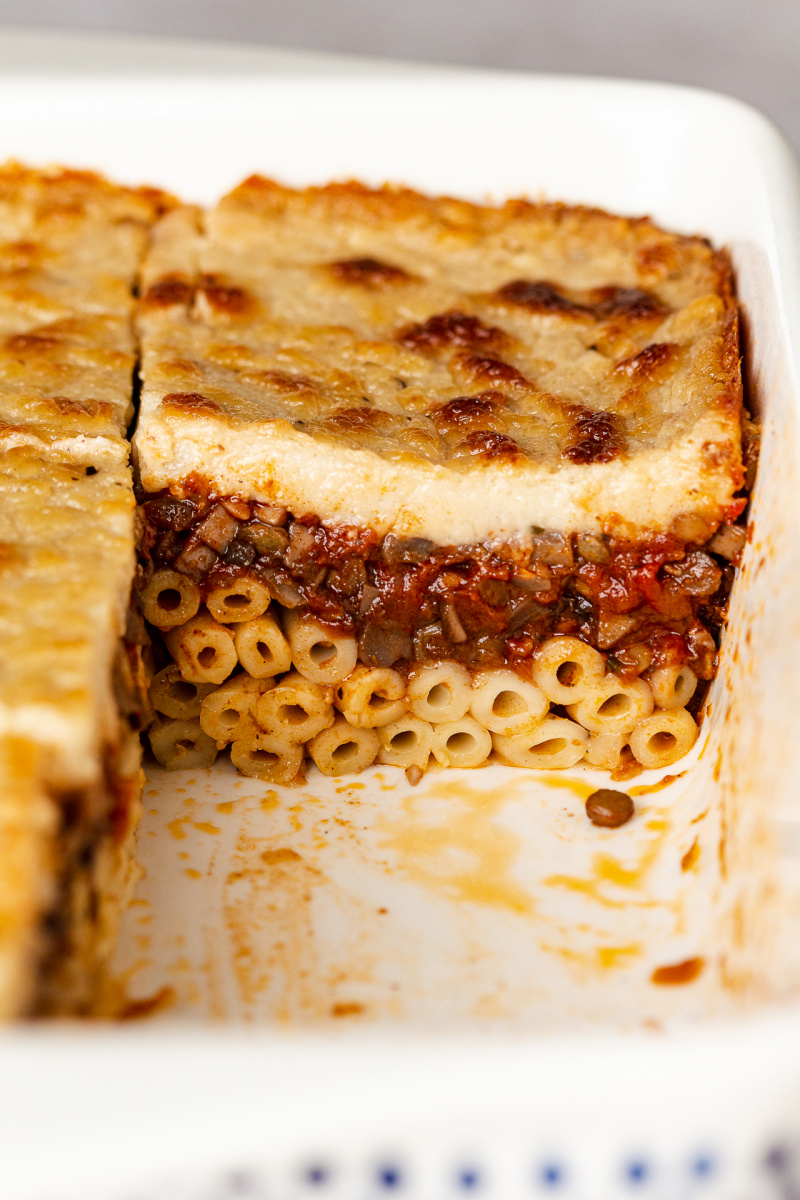Easter is coming and so I bet you are looking for a crowd pleasing dish, which whoever gathers around your table, vegan or not, would be happy to tuck into. I have one such dish for you and I challenge anyone not to enjoy it. It’s called pastitsio and it’s the Greek answer to lasagne, although some people say that it’s actually Italian. I’m not sure, but I do know a good pastitsio from when I lived in Greece as it is a mandatory staple on every decent taverna’s menu.
It’s a really comforting dish but as it’s eaten in Greece, which, Northern mountainous regions aside, doesn’t really know true winter 😉 – I feel like it’s very appropriate right now even if Easter Sunday turns out to be sunny and warm and you never know – especially when you live in the UK like me… Whatever weather Zeus sends us, we will be fine with a tray of pastitsio to dive into, hahahaha. Compared to moussaka, pastitsio isn’t as well known outside of Greece but it’s just as delicious and a little less fussy to make too. It consists of three distinct layers, the first one being pasta traditionally bound together with eggs and feta cheese, followed by beef ragu and crowned with layer of creamy béchamel. Traditionally, bucatini pasta is used for the base, but I decided to use the more widely available macaroni as it passed the test cooks with flying colours and it makes the recipe a little more accessible too. An important thing to remember is not to overcook your pasta! Having lived in Greece for four years, I noticed that they tend to take their pasta way beyond al dente. Initially, I put it down to a mistake or maybe personal preference of the cook but then I noticed that all the pasta packets I’ve ever bought whilst living there overstated pasta cooking time considerably. It is in Greece that I got into the habit of never quite trusting the prescribed cooking time and finding it out for myself. In the case of this dish, as the bake spends 50 minutes in the moderately hot oven, it is imperative to only just pre-cook your pasta or your will end up with an overcooked mess at the end. I replaced beef with a delicious and accidently healthy combination of umami-rich mushrooms and fibre-rich lentils. They deliver heaps of flavour and texture and make this still indulgent dish way healthier too. While traditional pastitsio boasts 800 kCal per portion, this guy comes in at half that. The final layer is béchamel, which is by far the most indulgent element of this entire dish, but I feel that it’s okay to indulge from time to time, isn’t it? It is made with mild tasting olive oil, flour and oat milk. It’s light, creamy and makes this dish so addictive. Its creaminess works beautifully against the slight tanginess of the tomato and wine based ragu. I like to serve it with a large green salad, some good wine and nibbles like olives, dips and crackers. We have been living on a few variations of this dish for the past week and we’ve enjoyed it immensely. It took our taste buds right back to living on the Mediterranean sea, which we miss this year in particular. I hope you and your nearest and dearest will enjoy it just as much and it will make your Easter gathering a little bit more special. καλή όρεξη!
300 g / 10½ oz macaroni pasta* (GF if needed) 120 ml / ½ cup oat milk (or other plant milk) 1 tbsp tapioca salt and pepper
BECHAMEL (or alternative bechamel)
1 head of roasted garlic cloves** (optional) 2 tsp white miso paste 780 ml / 3¼ cups oat milk (I recommend Oatly original) or other plant milk 80 ml / 1/3 cup mild olive oil (or 100 g / 3½ oz vegan butter) 80 g / 2/3 cup AP flour (or GF flour mix) 2 tbsp nutritional yeast 1 tsp salt, adjust to taste ¼ tsp pepper, adjust to taste freshly ground nutmeg (I used 1/3 whole nutmeg), to taste
PASTA BECHAMEL ASSEMBLY
**I recommend baking 3 heads at one time as they make a great addition to salad dressings, dips, soups. Alternatively you could use a finely grated clove of raw garlic, which you can add in straight or sauté it in the oil first, but be super careful not to let it turn brown – it will make the béchamel taste bitter. The baking dish I used is a square 25 cm / 10″ dish, but another shape dish of similar surface area will work just as well.
